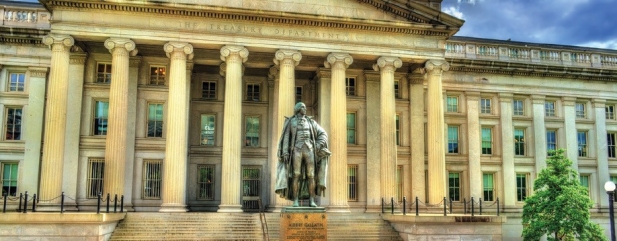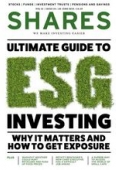Archived article
Please note that tax, investment, pension and ISA rules can change and the information and any views contained in this article may now be inaccurate.
Five different ways to play the bond market rally

The bond market is back in favour as investors seek solace in fixed income amid fears of a potential recession in the near future.
In particular, prices of US government bonds, known as Treasuries, have gone up in recent months thanks to increased demand fuelled by concerns about interest rates and global growth. And investors have been keen to own very short-dated bonds such as those with less than 12 months to maturity.
It’s an interesting turn of events as stocks and shares were all the rage for much of last year with many investors uninterested in bonds. But the big equity market sell-off in the fourth quarter of 2018 and growing fears about the global economy have shifted investors’ attention back to fixed income.
Also fuelling the bond space are rising expectations for central banks to consider restarting quantitative easing (QE) where they buy bonds and other assets to boost liquidity in the financial system.
BLACKROCK’S THREE YEAR TRACK RECORD
This is an interesting backdrop for BlackRock Sterling Strategic Bond Fund (BZ6DDH5) which has just celebrated its third year, delivering 17.3% return since inception or 5.5% annualised. As you can see from the chart, it is among the list of bond funds which have seen their prices appreciate since early 2019.
The broader question is whether investors are now too late to play the recovery in demand for bonds as prices have gone up and yields have come down.
While returns may be harder to achieve in the near term, particularly if investors have got it wrong and over-estimated central banks’ willingness to prop up the markets, there is merit in exposure to bonds as part of a diversified portfolio for the long-term.
‘If you are building a risk-controlled portfolio, having 100% in the share market is rarely done, particularly among advised clients. The vast majority of people will have exposure to bonds,’ says Ben Edwards, co-manager of BlackRock Sterling Strategic Bond Fund.
‘If the world is moving into a slower growth phase and markets are pricing in a higher chance of recession then I think central banks will move into supportive mode and bond-buying will form part of that.’
Edwards is among the investors preferring to put money into shorter-dated bonds. He likes knowing that a bond will soon mature so he can have a plan how to recycle the capital.
‘The overriding theme of the fund is defensive credit positioning. We haven’t bought a lot of high yield or emerging market bonds despite the ability to do so in the fund.’
The fund manager thinks the Fed’s rate hikes are near the end of their current cycle so he believes it is better to have good quality assets in the fund if markets could soon turn.
THREE-PRONGED APPROACH
BlackRock Sterling Strategic Bond has three different pots which make up its overall portfolio. The ‘income’ component sees the asset manager lend to high quality (largely BBB and BB-rated) companies with the goal of obtaining attractive yields from corporate entities with historically low default risk.
The ‘alpha’ component involves the team taking advantage of inefficiencies in the global fixed income markets. ‘For example, if you are an equity fund manager and like Barclays (BARC) you simply buy the shares when they are at a desirable price, or not at all.
‘But there are 2,000 Barclays bonds with different maturities and risk characteristics, all with different returns. Once you’ve done your analysis to invest in a certain company, you then have an opportunity to find mispriced bonds,’ says Edwards.
Thirdly, the ‘beta’ component involves allocating money to the most attractive areas of the global bond markets including high yield and emerging markets, although the fund manager reiterates that he hasn’t bought a lot of the latter two categories. ‘The returns from the fund have been pretty good over its first three years and we haven’t needed to add a lot of extra risk to get there.’
MIXTURE OF ACTIVE AND PASSIVE
Interestingly for an actively-managed fund, it tends to use passive exchange-traded funds (ETFs) to get exposure to high yield bonds.
Edwards explains that prior to launching the fund BlackRock looked at the strategic bond space and how others promised to allocate to certain assets. It identified the best way to structure the BlackRock fund was to do certain parts as efficiently and with the least possible costs through passive instruments.
‘If we want exposure to a sector we buy an ETF, if we like the debt of a certain company we buy the bonds,’ he says.
The bond is currently yielding circa 3% which is the same as when it launched. However, a 5.5% annualised return shows it has managed to generate additional returns elsewhere. Edwards attributes the broader mix of returns to income from the portfolio, capital appreciation from government bond yields falling, credit spreads coming down, and bonds getting closer to maturity.
OTHER WAYS TO GET EXPOSURE TO THE BOND MARKET
There are a variety of ways to add bonds to your investment portfolio. Perhaps the easiest way is to buy a bond fund, either one that tracks an index of bonds via an exchange-traded fund or an actively-managed investment fund where an expert is doing all the hard work for you.
Examples include:
1. Lyxor FTSE Actuaries UK Gilts 0-5yr ETF (GIL5) which tracks UK government bonds with remaining maturities of less than five years.
2. iShares GBP Corporate Bond ETF (SLXX) which tracks an index of large and liquid corporate bonds with investment grade rating.
3. Artemis Strategic Bond (B2PLJR1) which seeks to achieve income and capital growth by investing mainly in fixed income markets.
4. BMO Barclays Global High Yield Bond ETF (ZHYG) which tracks an index of global high yield corporate bonds.
Important information:
These articles are provided by Shares magazine which is published by AJ Bell Media, a part of AJ Bell. Shares is not written by AJ Bell.
Shares is provided for your general information and use and is not a personal recommendation to invest. It is not intended to be relied upon by you in making or not making any investment decisions. The investments referred to in these articles will not be suitable for all investors. If in doubt please seek appropriate independent financial advice.
Investors acting on the information in these articles do so at their own risk and AJ Bell Media and its staff do not accept liability for losses suffered by investors as a result of their investment decisions.

 magazine
magazine









